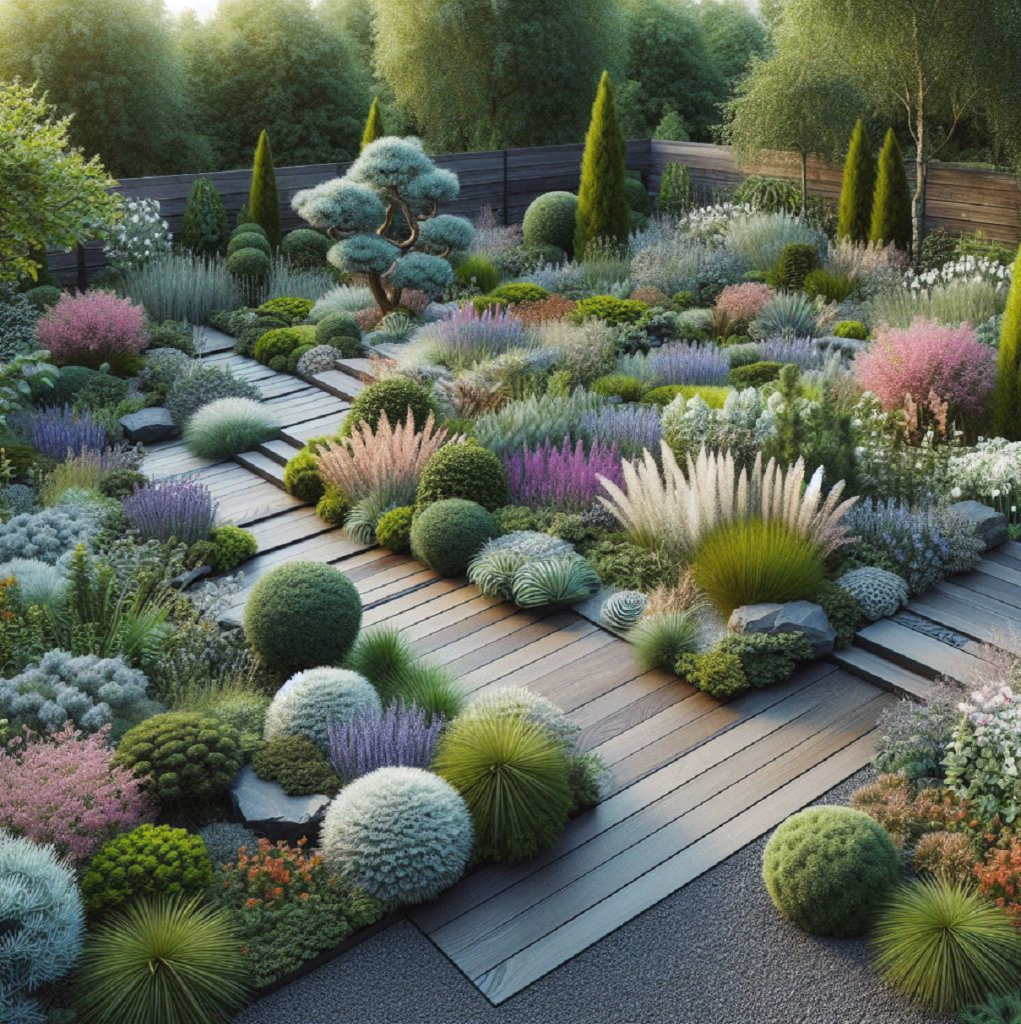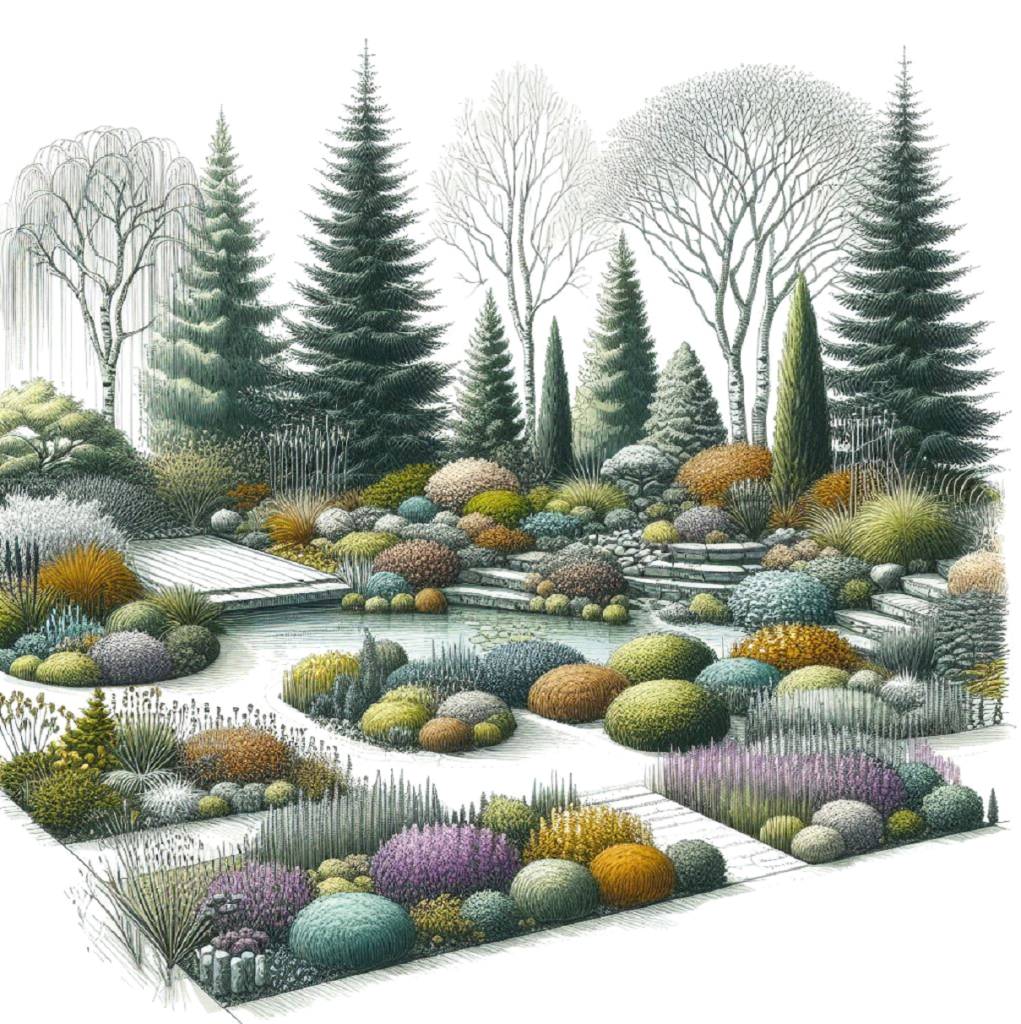Garden Design for Norther Climates
As the effects of global climate change become larger and more pronounced, growers in northern climates must adapt their yards to become more stable and sustainable. As traditional gardening methods are possibly not enough already to work, newer types of weather patterns, missing fluctuations in rain levels, and planting seasons prompt a renewal of garden layout. A possible solution for which the current urban agriculture system can be corrected is the implementation of climate-appropriate garden design for northern climates. Climate change has made garden design an urgent issue. In northern regions, it is essential to consider climate appropriateness when designing gardens. We are going to explore Garden Design for Northern Climates. It will be a complete guide.

Understanding the climate
The northern climates are mostly made for long, harsh winters; the periods for growth are usually very short; and the weather conditions are unpredictable. There are many cases in traditional garden design where, to achieve a certain look and to comply with the set climate conditions, we use plants and techniques that are rather heavy in maintenance and plants that make more demands on water. As a result, we get a hot climate, rising water consumption, and a higher risk of losing plants. Climate-responsive landscaping in northern regions takes the specific challenges into account and starts with native and adapted plant species, efficient irrigation systems, and a layout that uses resources as much as possible.
Principles of Gardening in a Climate That Conforms to the North, Northwest, and North-Northwest Crop Selection:
Focusing on crops that grow best in the given climate, ensuring year-round food supply with winterizing, integrating pollinators for crop health, and choosing plants, trees, and flowers that resist local pests are very important.
Plant Selection:
A very basic guideline for climate-friendly garden design in northern latitudes is the narrowing of the list of plants to either the ones native to the area or those that are tolerant of the local climate. Native plants certainly adapt to the local climate with minimal care; hence, they use very few resources to prosper. Kid-friendly conditions, though not the primary ones, have traits that make them do well in the harsh climate of the North.
Water Conservation:
Water Resources Management is the critical element in designing the Northern Climate Gardens. As a practical related to specific climate conditions, sometimes water resources are sparse or unstable. Growers should pay attention to permanent or drought-tolerant plant species, be mindful of irrigation use, and utilize techniques like mulching to help with water use.
Microclimates:
Microclimates play a role in climate-responsive garden compositions, which should be taken into account and exploited. Microclimates are the smaller versions of temperature, wind, and humidity that can be set by the creation of pathways to and from trees, buildings, and objects. Gardeners can simultaneously be optimistic since they are using these microclimates to their advantage to make the growing conditions better for the plants.
Biodiversity:
The northern climate-specific garden design requires the natural ecosystems to be its status toward biodiversity, as biodiverse ecosystems are better suited to deal with climate change impaction. This can be achieved by including the species of the local flora, creating a home for pollinators and other wildlife, and preventing the application of pesticides and herbicides.
Soil Health:
At the basis of “life-sustaining” ground, which gives the optimal trove for a Climate Smart Garden level, is natural fertile soil, which is a home for diverse and healthy plant life. Gardeners would be wiser to work on developing and sustaining soil fertility using compost, mulch, and organic materials that increase water holding capacity, provide better nutrients, and promote plant health.
Designing a Climate-Appropriate Garden in the Northern Regions:
Rain Management and Water Efficiency. The climate-appropriate garden design is favored over many other types of gardens due to the various factors in northern climate regions.
When designing a climate-appropriate garden for a northern climate, gardeners should consider the following steps:
Assess the local climate:
Commence the research by using the precise climate conditions of the northern region as the base of the study, including the average temperatures, precipitation patterns, growing season length, and potential weather extremes. This information will thus help you in determining the type of plants to grow and their layout for the garden.
Identify suitable plant species:
Pick up indigenous and adapted plants for growing that are suitable for the northern climate. Garden with plants that are cold and drought-resistant, as well as those that can survive and therefore flourish in the local soil environment.
Plan for water conservation:
Implement water-saving irrigation systems like drip irrigation or rainwater harvesting, and read about plant types that would need less water. Employ mulch to prevent water loss through evaporation and, consequently, to preserve soil moisture.
Utilize microclimates:
By positioning greenery, man-made structures, and other components, one can anticipate the sunnier and snugglier conditions that are found in the garden. This will help extend the growing season as well as shed light on plants, which are more vulnerable to the cold climate.
Conclusions about Garden Design for Northern Climates
With the impact of climate change getting worse, the Skyrim garden design Climate-appropriate garden design in a northern climate has never been more of a concern. Through such practices as appropriate plant selection, water stewardship, the production of microclimates, biodiversity, and soil health, gardeners can create worlds of beauty that are at the same time environmentally self-sustaining. That was all about Garden Design for Northern Climates.

FAQs about Garden Design for Northern Climates
What type of plants exactly fit in with a climate-appropriate garden paradigm, given that I reside in a northern climate?
Make sure you pick the plants for your climate-appropriate garden that originate from your area or that have evolved to cope with the specific weather conditions of your region. Research why certain specific types of climate exist in your region, e.g., average temperatures, precipitation patterns, and growing season length. First, explore the lists of various plants from the local botanical gardens, native plant societies, or the cooperative extension service to determine what plants could thrive in your region.
What tools and techniques can I use in the microclimate to help me develop a climate-appropriate garden?
Microclimates are micro-environments that form in spaces that are protected from direct exposure to the elements. These can be utilized in a climate-appropriate bed by thoughtfully locating plants, structures, and features so that they may benefit from cooler or warmer spots or protection against strong winds. Likewise, if you apply walls, fences, or hedges, you will create protected areas that will give an advantage to the plants needing an extended growing period for greater tolerance. Proper placement of heat-absorbing elements, either dark rocks or pavements, may also be used to provide an environment that supports the life of specific species.